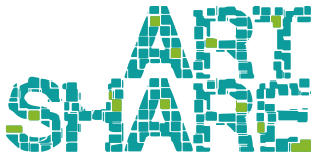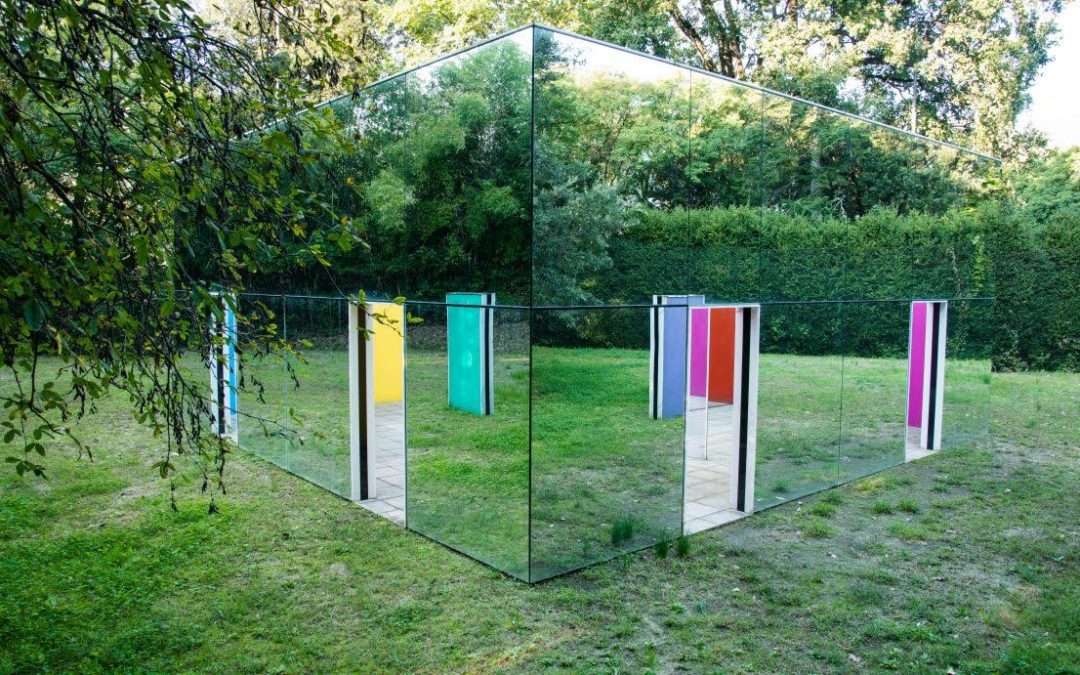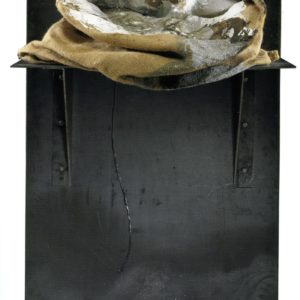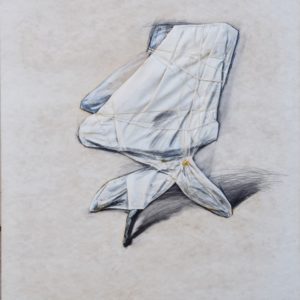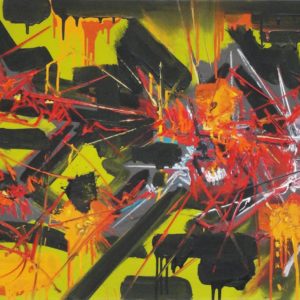Art in the Open air
A journey through the sculpture parks of Italy
by Fabio Cavallucci and Elena Rossi
Has the long lockdown made us impatient to get out, meet other people, visit pleasant places and cultural sites? Do we want to be in the open air, but also to see again exhibitions and museums, which are gradually reopening everywhere? How do we manage this with the social distancing rules still placing restrictions on us?
For cinema and live shows, Italy is studded with squares, arenas and open-air theatres where it is not difficult to attend events while maintaining the due distances, but the situation is slightly different for the visual arts. In this case too however we have places which seem perfect for the current season: the sculpture parks. There’s a good and varied range of these, from Trentino down to Sicily; themed or monographic gardens, parks connected to the genius loci or displaying works by important international artists. But they all have a feature in common: the combination of nature and artifice, fitness and culture. A visit to these places in this static phase of the pandemic can be truly regenerating. And many of them have not let slip the opportunity to organize special events, encouraging the public to visit them.
This journey along the peninsula starts with Arte Sella, a very special park situated in one of the loveliest valleys of Trentino and consisting of works made with natural materials immersed in nature. Art here is a “living” organism, since the wood, stones and plants of which the installations are made are in constant evolution. They grow and they move; they break and they decay. They must be looked after, cultivated, periodically restored. Take for example the famous Cattedrale vegetale (Vegetable cathedral) by Giuliano Mauri, consisting of rows of plants. Some years ago a heavy snowfall knocked most of them down, and new ones were immediately planted. In this open-air museum it is the not the concept of conservation, authenticity which dominates; the “author’s hand” does not count. Here nature is the master and human beings, also artists, are merely humble servants who exalt its character and force.

Going down the Adige Valley, already in Veneto in the borough of Dolcè we find the Wood of the poets, a project created by the Trentino artist Lome (the alias of Lorenzo Menguzzato), who is well-known for his coloured faces which are produced serially as in Pop Art, but are dense in feeling as in Expressionism. Over almost 20 years Lome has invited poets and artists to send poems and drawings, which are displayed on the trees along a 12-kilometre itinerary of paths in 13 hectares (32 acres) of woodland. Maurizio Cattelan, Luigi Ontani, Nicola De Maria, Andrea Zanzotto, Edoardo Sanguinetti, Alda Merini or a genius loci like Gigi Zoppello: these are just some of the 600 authors who, with Pope Wojtila and the Dalai Lama, have left their sketches or poems here. In the fine season, the wood comes alive with events and initiatives. In recent times, yoga and meditation have become one of the favorite activities, in the consideration, reinforced by the post-Covid situation, that nature and culture can be combined when the body too becomes part of this holistic vision.
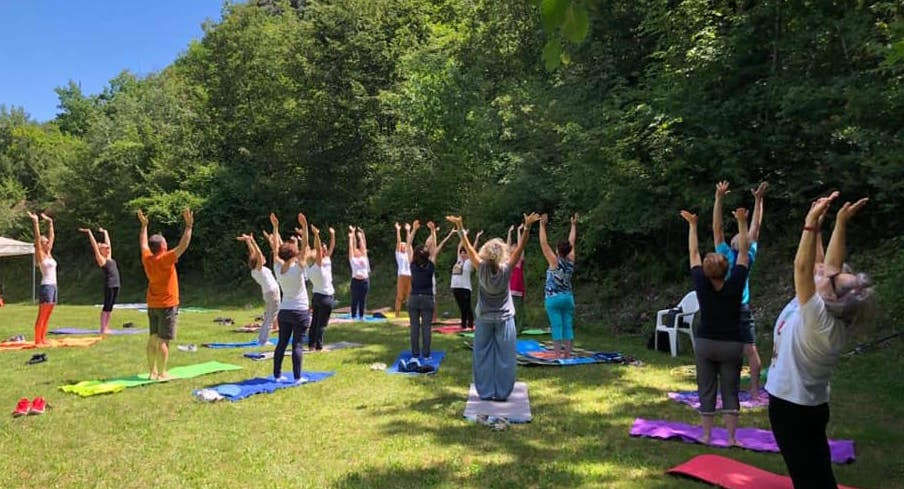
Proceeding southwards, leaving the A14 at Rimini, we find in the old center of San Marino a multi-site museum. The works, displayed along the streets and alleyways, accompany us on our discovery of the old Republic: mediaeval walls blended with contemporary materials and styles. The Titan government, which had an important tradition, alas no more, of art biennales, over the years collected sculptures interpreting the theme of peace by artists of a few decades ago such as Emilio Greco, Aligi Sassu, Kiyomi Sakaguchi and Giorgio Oikonomoy. But there are also a few more recent surprise treats such as an early work by the contemporary star, Maurizio Cattelan.
And going up the Apennine valleys towards Tuscany, in Santa Sofia in Romagna we come across a river sculpture park. Works by Mauro Staccoli, Luigi Mainolfi, Anne and Patrick Poirier, Hidetoshi Nagasawa, Flavio Favelli, Giuseppe Maraniello, Cuoghi and Corsello and others accompany visitors on their 2-kilometre walk upstream along the river Bidente, starting from the center of the village. In this season, visitors desirous of a moment of coolness can also bathe in the lovely springs alongside the sculptures.
The pioneer Italian park, the unimitated example, is the Tuscan Fattoria di Celle (Celle Estate) near Pistoia, which hosts the imposing collection of environmental art built up by Giuliano Gori and his family from the early ‘80s to today, with about 80 site-specific artworks by some of the most important artists in the world, including Alberto Burri, Joseph Kosuth, Sol Lewitt, Richard Serra, Robert Morris, Giuseppe Penone, Magdalena Abakanowicz, Michelangelo Pistoletto, Daniel Buren, Giuseppe Spagnulo. All of these fully respect both the natural environment and the concept of reciprocal independence, since the estate stretches over a whole hill, with woods, meadows, farmhouses, vines and, even if the works are generally large, the ample spaces allow each one of them a separate life in its own ecosystem. The estate has for some time been a site of pilgrimage for art-lovers and tourists (thousands of visitors invade the park for the traditional spring inauguration of new works), and for a few days now it has been possible to book guided tours again.
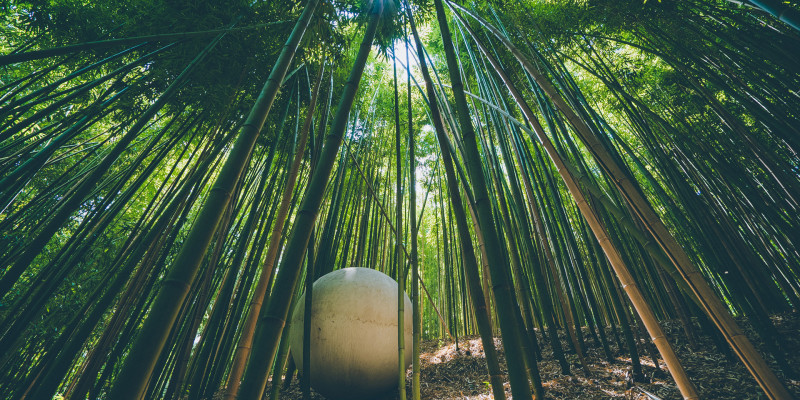
We proceed then to the fine Castle of Ama near Gaiole in Chianti. Its collection developed out of a collaboration with the Galleria Continua , which in the ‘90s had organized a recurrent exhibition of great artists distributed over the hamlets and castles of the province of Siena. The project, consisting of several installations, fits perfectly into the natural context and among the buildings, in perfect harmony with the spirit of the estate and the old hamlet. Since 1999, artists have been invited to leave their indissoluble imprint: Michelangelo Pistoletto with his tree-trunk with its reflecting inner surface; Daniel Buren with a glazed wall; Kendall Geers and Anish Kapoor, and the new arrival Miroslaw Bakacon, Nervo rosso (Red nerve), a deeply spiritual work, a thin red thread running from the ceiling to the floor in the cellars where the excellent classic Chianti wine sits in its casks.
At the beginning of the ‘90s, the Swiss artist Daniel Spoerri bought an estate on the slopes of Mount Amiata; here he entered into a close relationship with nature and began to install sculptures. In 1997, the Garden of Daniel Spoerri was inaugurated, and since then it can be visited from Easter to October. Currently it hosts 113 installations by 55 artists over a territory of approximately 16 hectares (39 acres), rich in woodland and olive groves. The contrast between Eros and Thanatos is one of the recurring themes of the Garden. Other works address mythology or astrology. For example, the simple but intriguing work by Spoerri himself, the copy of Agathe Tyche stone produced by Johann Wolfgang Goethe for his summer home in 1777, with its surprising resemblance to a work of contemporary Minimalism and described by Arturo Schwarz as a “lay altar conceived to sanctify the love which leads to awareness and harmony”. Since 2016, the Garden has hosted a series of workshops on the theme of “art and botany”, entitled WANT; they last a week and transform the park into a research laboratory and a meeting-point for the representatives of different disciplines.
Moving further south, near Capalbio we come to the Giardino dei tarocchi (Tarot garden), wholly created by Niki de Saint Phalle, a true forest of house-cum-sculptures representing the 22 Arcana cards and made with various materials (glass, steel, porcelain); an anarchic overdose of colour. For this summer, the Giardino proposes numerous open-air activities combining art, nature and entertainment in an intense, varied program covering multiple interests. Music, open-air cinema and performances are some examples of the events proposed by this dynamic Maremma location.
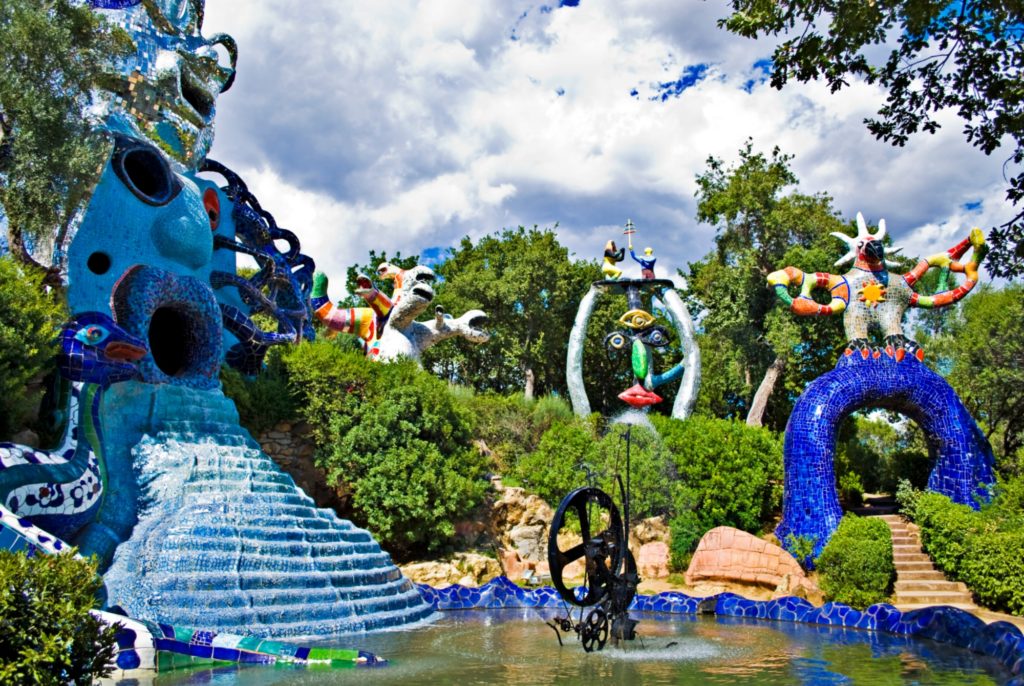
We continue rapidly southwards to reach Basilicata, with Arte Pollino, which has been created in the national park with the largest protected area in Italy. Here we find large artworks by Anish Kapoor, Carsten Holler and Giuseppe Penone. The latter’s Teatro vegetale (Vegetable theatre), a 125-metre diameter circle, is particularly enchanting. The main project bonding Arte Pollino to Matera is Ka Art, curated by Katia Anguelova, whose intention is to activate wide social participation via a highly topical theme: the “fragility” of art and its relation to the “fragility of nature. Expressed in experimental modes as an open, in-progress work, the project aims to uncover the post-lockdown potential of this territory.
Among the manifold beauties of Sicily, Fiumara d’arte (Art river) at Castel di Tusa is strikingly original. It is an open-air museum consisting of a series of contemporary artists’ sculptures positioned along the banks of the river Tusa. The project originated from an idea of Antonio Presti in 1982, with the commissioning of a work from Pietro Consagra in memory of his father; the collector immediately had the idea of creating a sculpture park which would link the contemporary art language with the harsh beauty of the Messina landscape. Over the years, imposing works by Tano Festa, Hidetoshi Nagasawa, Paolo Schiavocampo and other artists have been added to the collection, creating a conglomeration of art immersed in nature. Respiro (Breath), the most recent work added to the collection, commissioned from the Palermo sculptor Giacomo Rizzo, has been positioned on the sea shore just a few steps away from the Atelier sul mare, an hotel with rooms created by the artists to crown an already breathtaking view.
Our journey ends in Gibellina, in the valley of Belice. This town, destroyed by the 1968 earthquake, was wholly rebuilt immediately afterwards at the behest of the mayor Ludivoco Corrao by internationally famous artists and architects; it thus became a fully-fledged open-air museum. The famous Grande Cretto (Large Crack) by Alberto Burri over old Gibellina is the indisputable iconic symbol of the quake which destroyed it. The town remains an immense laboratory of artistic experimentation and planning, in which prestigious works interact with the urban space according to an innovative kind of perspective. Works by Mario Schifano, Andrea Cascella, Arnaldo Pomodoro, Mimmo Paladino, Franco Angeli, Leonardo Sciascia are just some of the numerous interventions making up the project. But there is not only art: Gibellina is also a museum en plein air of modern architecture. Examples of this are the Chiesa madre (Mother church) of Ludovico Quaroni, or the Sistema delle Piazze (System of squares, as the succession of areas at the entrance to the village is called) by the architects Franco Purini and Laura Thermes, or the town hall designed by Vittorio Gregotti, Giuseppe and Alberto Samonà.
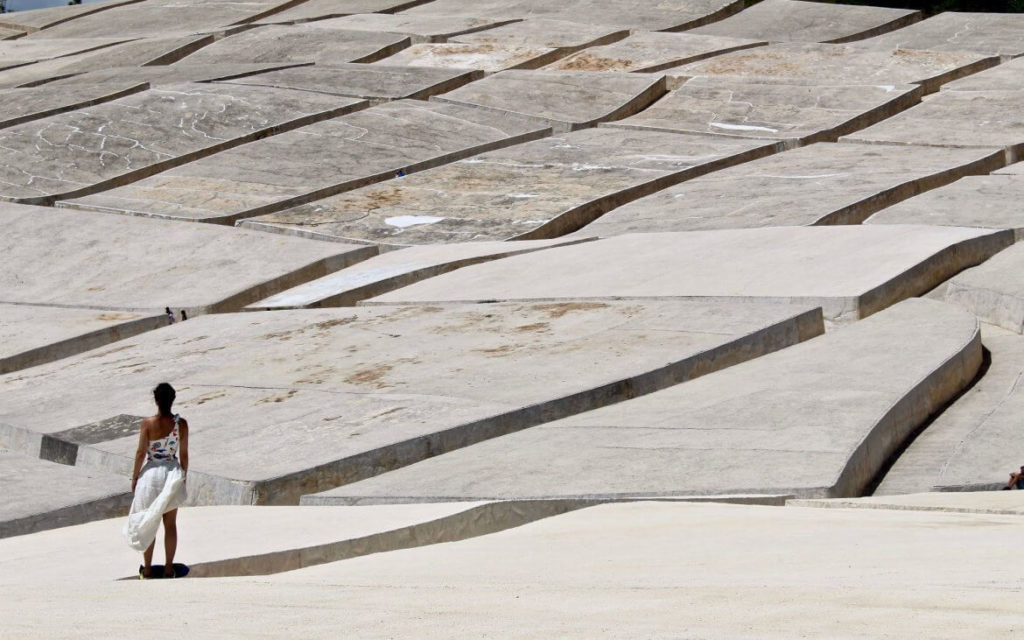
Here our journey through the natural and contemporary artistic beauties of Italy comes to an end. Our overview has not been not an exhaustive one. The above-mentioned places are just some of the many contemporary art parks in the territory (which also include the village of Villa Verzegnis in Friuli, Ca’ La Chironda near Bologna, the Parco di Sculture (Sculpture Park) of Chianti and the residential center of Peccioli); these places are itching to welcome visitors in this very particular period, because they are lucky enough to be situated in the open air. And in these times, even the air is a precious asset and an added value for the cultural quest.
